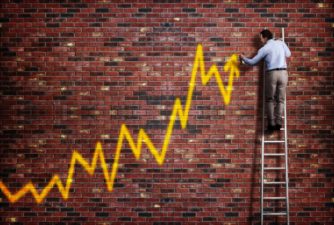Earlier this week, in part one of this series, I explored growth investing as an investment strategy.
A second investing strategy you can employ is buying growth stocks, but with a greater focus on the price you pay.
The over-exuberance and FOMO trap
Growth stocks can trade on momentum (both up and down) as Mr Market gets overly excited or pessimistic about a company's future. This can lead to insane valuations, which take even the fastest growing companies years or even decades to grow into. A great example of this is any dot-com stock that traded near the turn of the millennium. Companies with no profits or fundamentals would list on an exchange and see their share price rocket in a matter of weeks or months. Unfortunately for those who paid those high premiums, a number of those businesses went bankrupt.
This is a cautionary tale, but it shouldn't put you off investing in growth stocks. Amazon.com, Inc. (NASDAQ: AMZN) followed the same cycle of some of those bankrupt companies, losing circa 90% of its value. However, as a much higher quality business with a long-term vision, Amazon has gone on to compound its investors' money at high rates for decades. I would strongly recommend taking a look at the Amazon share price chart – the dot-com bubble looks like a tiny blip.
That's where the GARP investor comes in.
Growth at a reasonable price, or GARP
Growth at a reasonable price (GARP) is one way to minimise your downside risk. GARP investors look to find companies with strong growth potential, for which the current share price doesn't reflect said future. Somewhat betting against the wider market, GARP investors hope to see strong revenue and earnings growth alongside an expansion in the multiple the wider market is willing to pay for the company – generally reflected by a growing price-to-earnings (P/E) ratio.
One ratio that can be used to judge the relative growth and valuation of a company is the price/earnings-to-growth (PEG) ratio. This can be calculated by dividing the P/E ratio by the earnings-per-share growth percentage. You should expect to pay a higher price for a fast-growing, high quality business. That's why the PEG ratio is so useful! It allows for some indication of the relative value you are paying for growth, which can then be compared between stocks. It is worth considering how far into the future a company can grow at its current rate. A higher PEG ratio implies that the market believes a company can grow quickly over a long period of time or at an accelerating rate.
Being based around valuation, a stock may be seen as a GARP company one day but not the next. Currently some stocks I see fitting the mould are Aristocrat Leisure Limited (ASX: ALL) and Corporate Travel Management Ltd (ASX: CTD).








